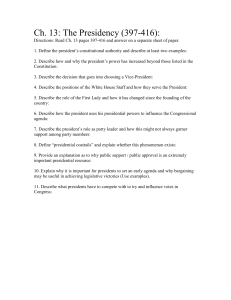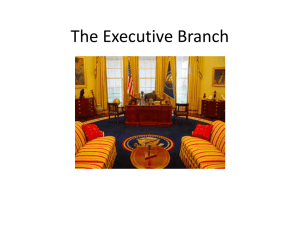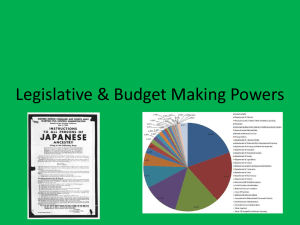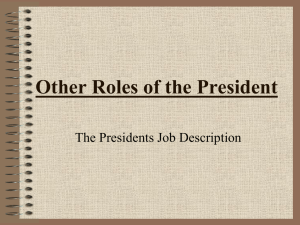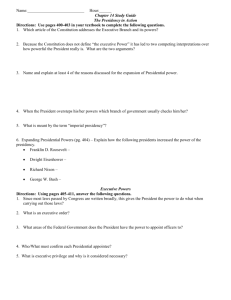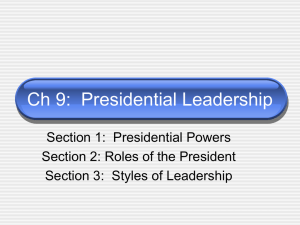Ch. 9 PowerPoint
advertisement
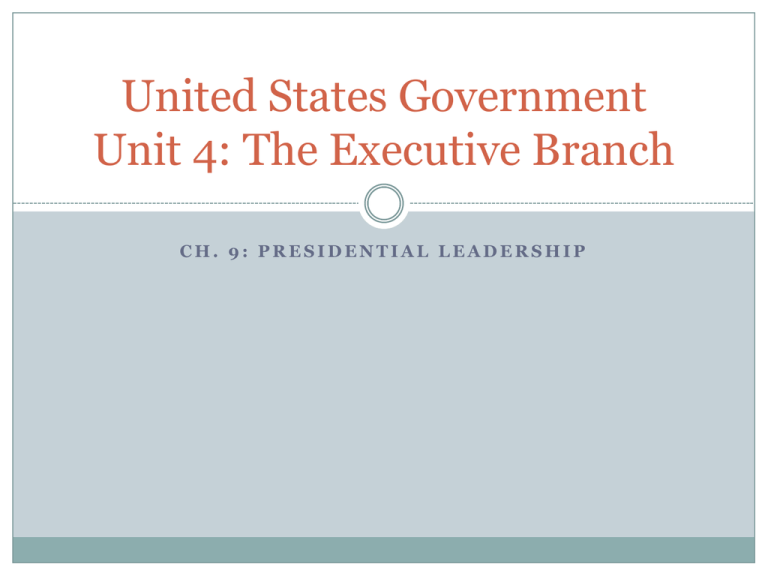
United States Government Unit 4: The Executive Branch CH. 9: PRESIDENTIAL LEADERSHIP A. Constitutional Powers Article II grants the president broad but vaguely described powers. He heads the executive branch, is commander in chief, conducts foreign policy, and has judicial powers. B. Informal Sources of Power Presidents have added to their powers by their actions. During time of national crisis, presidents like Abraham Lincoln and Franklin D. Roosevelt greatly expanded the powers of the presidency as the federal government dealt with dangers facing the United States. Modern presidents claim their ideas and policies represent a mandate from the people, and they use the media to build support for their ideas. C. Limits on Presidential Power The Constitution gives Congress the power to limit presidential authority by overriding a veto and impeaching and removing the president for clear abuse of power. The federal courts also limit the president’s power. Public opinion can also limit the president’s actions. D. Roles of the President As head of state, the president: A. represents the nation at ceremonial functions; B. a symbol of the entire United States. D. Roles of the President (cont.) As chief executive, the president: A. heads the executive branch; B. influences how laws are executed through executive orders, presidential appointments, removal of appointed officials, and impoundment; C. grants pardons, reprieves, or amnesty. D. Roles of the President (cont.) As chief legislator, the president: A. proposes legislation to Congress; B. may use political favors to gain congressional support; C. has the threat of the veto over Congress. D. Roles of the President (cont.) As economic planner, the president: A. promotes high employment, production, and purchasing power; B. is required to prepare a federal budget each year. D. Roles of the President (cont.) As party leader, the president: A. helps raise party funds and plan campaign strategies; B. uses patronage to appoint party members and supporters to government jobs. D. Roles of the President (cont.) As chief diplomat, the president; A. directs foreign policy; B. has sole power to make treaties, with Senate approval; C. has sole power to recognize foreign governments. D. Roles of the President (cont.) As commander in chief, the president: A. shares with Congress the power to wage war; B. makes key military decisions; C. may use the armed forces to end disorders or give aid in natural disasters. E. Leadership Qualities and Skills Presidents must understand the people of the United States. Failure to understand the public’s mood can be disastrous for a president. Presidents must be able to communicate effectively and explain their policies clearly. Successful presidents must: 1. be flexible and open to new ideas; 2. be able to compromise; 3. have political courage and be willing to go against public opinion.

